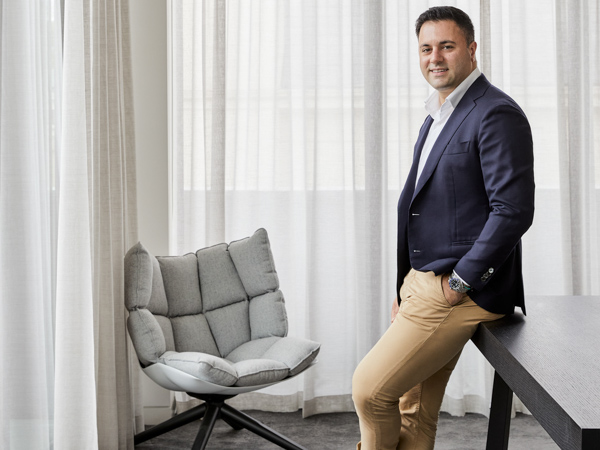[ad_1]
Last month, we introduced you to State of Address (S-of-A), the world’s first architecture and design community on the blockchain.
Created by a quartet of Australian entrepreneurs, State of Address aims to become the next evolution for the architectural community.
S-of-A Founder Dominic Cerantonio discusses with us the long term vision of the community, how it plans to benefit architects, and their captivating first collection.
Jarrod Reedie: Tell me about why you believe it was crucial for an architectural community to be set up on the blockchain.
Dominic Cerantonio: 25 years ago, architecture was still very much a pen and paper profession. Even with the use of computers, the architectural community today is still somewhat analogue, with many still reviewing and appreciating architecture on paper.
As BIM computing and VR technology continues to evolve, our ability to visualise and experience architecture progresses. The blockchain provides the platform for architects to now showcase their work in a setting that is more interactive, more widely available, and democratic. We believe State of Address will be the next natural step in the evolution of architectural design. It should also be noted that architecture and design is one of the largest communities around the world however, memberships in this community don’t provide direct financial benefit for members.
With our ‘Mint Pass’ community being limited to 1000 members in perpetuity, not only will this membership base be extremely exclusive, NFT technology will also allow the membership to be sold on for financial benefit.
JR: How important is it these days to create other revenue streams for architects and how do you believe architects will reap the rewards of the community?
DC: It has always been important to have diversity in the type of work you do to withstand market volatility. Some architects that specialise in educational work may be negatively impacted by cuts in government spending, whereas more commercial architects may lose work due to economic recession. Having a more balanced and diverse portfolio of work offers firms more resilience and reduces market susceptibility.
State of Address aims to add another area to utilise as architects and designers can develop and sell their work in a democratic forum not bound by the rules of practice. S-of-A will also give younger architects a marketplace to monetize their design work. Architectural NFT’s enable design to be appreciated as an asset, something that has value and can be traded freely; it is not restricted to being built.
“his will hopefully unlock many projects and allow many architects to be appropriately rewarded. However, most importantly – S-of-A’s model adds royalties in perpetuity as an income stream for architects – so not only are architects now being paid for the upfront commissioning of the design, but earning a percentage of every resale for many years down the track.
JR: What about ensuring affordability for the end consumer? How will S-of-A be able to provide this affordability?
DC: The time, skill and effort that goes into designing architecture can sometimes lead to it being expensive for the end consumer. This has been a historical problem that hasn’t been solved to date.
By tokenising design, architects can bring scale to the work and ‘share’ their fees. By fractionating the fee, the work of architects becomes more accessible to more people and our smart contracts will have functions to ensure local saturation is not possible. Over time, we are confident this will have a positive impact on our built environment. Not only does this reduce the cost, but it also provides consumers with a global database of architectural design thereby, also improving the quality of the designs.
JR: Speak to me about the long term vision for S-of-A?
DC: We are going to change the world of architecture and design. The linear relationship between client and architect is a must change to become a more efficient, rewarding, and to foster a viable industry. Our community will look to champion architects, create better opportunities while engaging in open dialogue to better the profession.
We will celebrate architecture as a field of creativity and technical ability whilst integrating with AI to help build more sustainable environments, both on the blockchain, in the various metaverses and in real life. Not only will this result in the cost of design reducing and the quality of design improving, it will also convert architectural design into an asset class that can be invested into and traded for long term gain.
JR: Talk me through the first collection and what you’re offering in terms of NFTs.
DC: Our first NFT design is a residential home, designed by Cera Stribley Architects, that can be easily applied to many environments. It is intentionally minimal and restrained to appeal to a wider audience.
We hope to demonstrate the power of fractionalising design through our first edition and then moving on to more exploratory and exciting projects. Following the release of the first design, we will also be announcing the global architects that will be featuring in our first collection. Later in the year, we will be looking to add collections that feature office environments, hospitality environments, multi-residential design, and more exciting single residential collections.
For more information regarding the community, visit www.s-of-a.io.
[ad_2]
Source link
